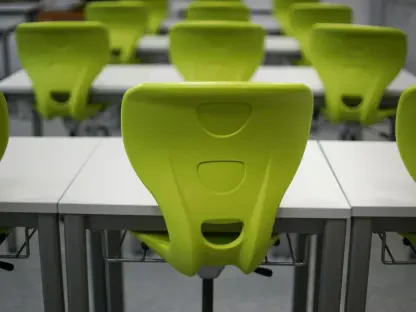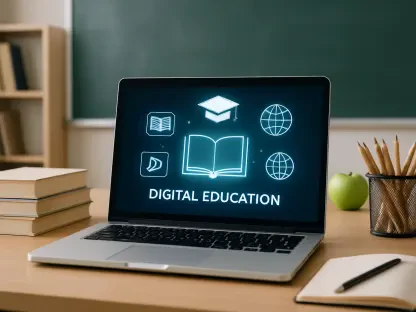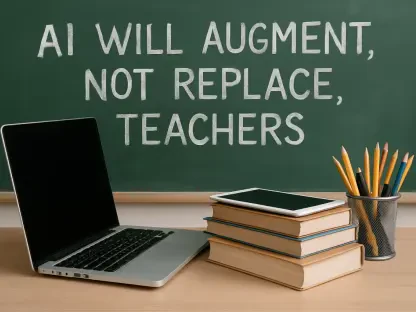The educational landscape in Hawaii is experiencing a transformation driven by the integration of artificial intelligence (AI), marking a shift towards more personalized and interactive learning experiences. As this technological wave sweeps through the islands, schools are adapting to a system where AI serves as both a tool and a partner in education, influencing the way students learn and teachers instruct. The use of AI is redefining traditional educational models, supporting creativity, addressing knowledge gaps, and managing complex information more efficiently. These developments in educational technology aim to enhance both teaching and learning processes, creating a significant impact on Hawaii’s school systems.
The Role of AI in Education
Enhancing Learning Through Personalization
AI in education is gaining recognition for its ability to create personalized learning experiences, aligning educational content with individual student needs and preferences. This customization offers students a unique educational journey, enabling them to engage more deeply with the material and to learn at their own pace. Teachers benefit equally by having more time to focus on creative teaching methods rather than administrative tasks, as AI assists in organizing and presenting information effectively. In Hawaii, educators are leveraging AI technology to address diverse learning styles, adapting lessons in real-time to suit different preferences, thus encouraging active participation in the classroom.
The practical application of AI extends to providing tools for students to conduct extensive research, brainstorm ideas, and translate concepts across various disciplines. This creates an interactive learning environment where students feel empowered to explore new topics without the constraints of traditional methods. Through AI, the curriculum becomes not only more accessible but also more relevant, promoting lifelong learning and intellectual curiosity. Moreover, as AI continues to develop, the potential for enhanced educational experiences appears limitless, transforming how students interact with academic content and paving the way toward more inclusive education.
Bridging Knowledge Gaps Creatively
Creative applications of AI in Hawaiian education are evident in practices such as “vibe coding,” where students use AI to design intuitive software. This method enriches the learning experience by combining traditional coding with innovative technologies, offering a comprehensive understanding of how AI can be applied in practical scenarios. Such initiatives allow students to harness AI for projects that require critical thinking and problem-solving, skills crucial for the future workforce. As these creative collaborations grow, educators in Hawaii recognize the importance of integrating AI into lesson plans to prepare students for a tech-driven world.
AI’s role in managing information also plays a significant role in bridging educational gaps. By presenting complex data in a simplified manner, AI tools enable students to grasp difficult concepts that were previously challenging to teach. This democratization of information through technology helps foster a more inclusive educational environment, ensuring that each student receives the support needed to thrive. Furthermore, AI-driven analytical tools track student progress accurately, providing real-time feedback and identifying areas of difficulty, allowing for timely interventions and customized learning strategies that cater to individual needs.
Challenges and Opportunities in AI Integration
Navigating Technological Complexities
While AI offers numerous benefits, its rapid evolution poses challenges that educators and institutions in Hawaii must navigate carefully. These include staying informed about the latest developments, ensuring AI tools are effectively integrated into existing curriculums, and addressing potential ethical concerns. Students, often more technologically savvy, may use AI tools outside of school in ways that require careful monitoring to prevent misuse and to encourage positive learning habits. Open and transparent communication within educational communities is essential for addressing these challenges successfully, ensuring that AI remains a tool for enhancing and not complicating the learning process.
Institutions are increasingly offering professional development programs focused on AI, preparing educators to incorporate new technologies confidently and effectively. In some cases, tech companies collaborate with schools to ensure that AI tools introduced into the classroom meet specific educational standards and support substantive learning. This collaborative approach ensures that the integration of AI is seamless and that educators are equipped to manage any technological complexities that arise. As education systems shift to embrace AI’s potential, it is crucial that the technology strengthens rather than undermines educational goals.
Ensuring Ethical Use and Privacy
As AI becomes integral to Hawaiian education, there is a heightened focus on the ethical use of these technologies and the protection of student data. Establishing clear policies regarding data privacy and ethical AI use is paramount to maintaining trust between stakeholders in the educational sector. Schools across the islands are taking proactive steps to safeguard the sensitive information of students, balancing the benefits of AI with the essential need for privacy and security. Practical measures include encrypted data storage, limited access to personal information, and clear guidelines on how AI applications should be used in educational contexts.
Ethical considerations also play a key role in how AI is employed to ensure inclusivity and fairness. Educators are mindful of biases that could inadvertently be embedded within AI systems, striving to create a learning environment where AI complements human instruction rather than replacing it. The emphasis remains on reinforcing AI’s role as a supportive aid that enhances human connection and understanding within educational settings. This commitment to ethical AI use ensures that technology serves to enrich student learning experiences and maintains the integrity of Hawaii’s educational framework.
Shifting Paradigms: Embracing AI-Driven Education
Transforming Traditional School Models
AI’s integration is not only altering how education is delivered but is also prompting a reevaluation of traditional teaching models in Hawaii. This shift is characterized by an increased reliance on technology to deliver educational content more innovatively. Traditional classrooms are gradually giving way to hybrid models that combine in-person teaching with digital resources, catering to the diverse needs of students. Such developments underscore the need for educational systems to be adaptable, leveraging AI technology to transcend traditional limitations and create more dynamic learning environments.
The rise of homeschooling, buoyed by AI tools, reflects this change as parents opt for more flexible learning frameworks for their children. These AI-driven educational resources have made homeschooling an attractive alternative by providing access to quality content and learning aides that were once confined to physical classrooms. As more families embrace non-traditional schooling methods, schools must adapt, ensuring they remain relevant in an increasingly digital world. This evolution highlights the need for educational models that are as versatile as the technologies driving them, promoting a system where AI and education coexist harmoniously.
Innovating for Inclusive Learning
AI technology plays a pivotal role in promoting inclusivity within education, particularly for students who may have struggled under conventional systems. By offering personalized and adaptive educational experiences, AI helps bridge the gap between various learning abilities, creating an inclusive environment where every student can excel. This approach considers diverse learning needs, offering a tailored experience that maximizes individual potential. In this way, Hawaiian educators are harnessing AI’s capabilities to foster a supportive and equitable educational landscape, preparing students for a future where digital skills are essential.
Incorporating AI into educational practices has also paved the way for innovative learning methods that resonate with contemporary students. Interactive simulations, virtual reality experiences, and AI-assisted tutoring are among the many strategies employed to engage students meaningfully. Such innovations not only enhance learning experiences but also equip students with the skills needed to navigate a rapidly changing technological world. By aligning education with the digital advancements of today, Hawaiian schools are setting a precedent for future teaching practices, guiding students toward success in a variety of fields.
Conclusion: A Future-Ready Educational Landscape
Hawaii’s educational scene is undergoing a transformation fueled by the integration of artificial intelligence (AI), marking a progressive shift towards more personalized and engaging learning experiences. As AI technology becomes more prevalent across the islands, schools are adjusting to a system where AI acts as both a tool and collaborator in education, significantly influencing student learning and teaching methodologies. This technological advancement is reshaping conventional educational models, fostering creativity, bridging knowledge shortfalls, and efficiently handling complex data. These strides in educational technology are designed to enhance teaching and learning processes, creating a profound impact on Hawaii’s school infrastructure. By leveraging AI, schools aim to offer tailored educational experiences, promoting active participation from students and empowering teachers to develop more nuanced instructional strategies, thereby reshaping the future educational landscape in the Hawaiian archipelago.









